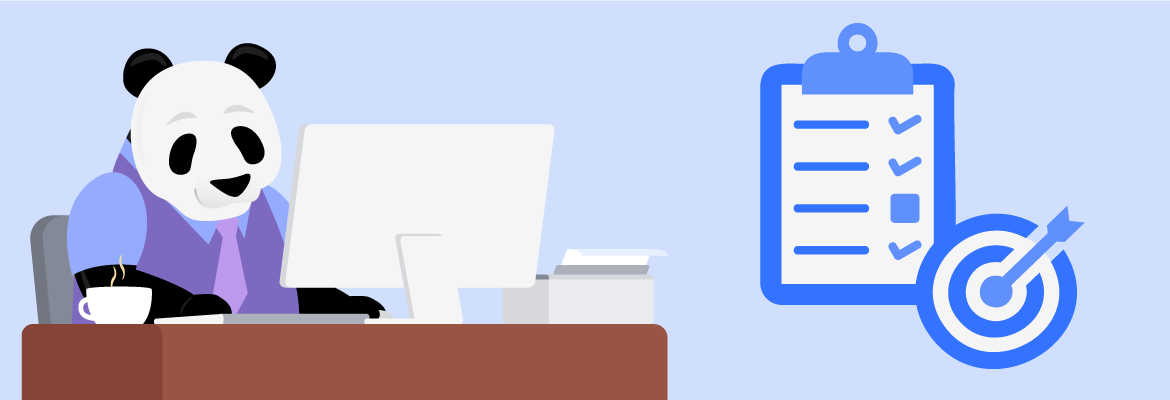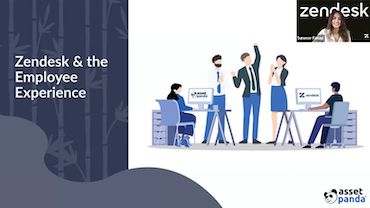Best Practices to Build and Implement Your Government IT Asset Management Plan

Secure and effective IT asset management (ITAM) is crucial for any organization, especially government offices. With the many IT devices (e.g., laptops, tablets, servers) you rely on daily to conduct business and keep important records, you need accurate data on the status and condition of these assets to ensure they remain in working order. You need a government IT asset management plan.
Before we dive into best practices for building and implementing your plan, let's define exactly what government ITAM entails. Government IT asset management is the practice of managing your office's technology assets throughout their lifecycles, all the way from acquisition to disposal. Whether you're managing physical IT hardware or software licenses (or both!), government IT asset management aims to gain visibility and control over your entire IT inventory so you can increase security and data accuracy, optimize asset usage, and improve overall efficiency.
Of course, to run an effective government ITAM program, you need the right software and plan in place to help you do so. You can learn more about selecting the right government IT asset management software in this blog post. Now, let's look at best practices to start building your ITAM plan.
Building Your Government IT Asset Management Plan
There are several steps to building a comprehensive government IT asset management plan, including identifying your IT assets, outlining processes for various ITAM scenarios, and naming key stakeholders/chain of command for these processes. All of this should be clearly documented and accessible to the rest of your team to ensure adoption and consistency. Now, let's walk through a few best practices as you build your government IT asset management plan.
Define Your IT Inventory
From computers to servers and everything in between, your team will likely use many kinds of IT hardware and software daily. Before you even begin to inventory your IT assets and add them to your new platform, defining what will count as an individual asset versus what might be part of a kit is essential. Kitting smaller items like headphones, keyboards, and mice can help streamline asset deployment processes.
ID and Tag Your IT Assets
Once you've determined what IT hardware and software make up your overall inventory, the next step is to ensure that each item has its own unique ID so it can't be mistaken for another asset of the same model. Ideally, you should also tag each asset with its own barcode label so you can more easily deploy and audit them in the future. Scanning a barcode as opposed to manually entering an item's ID not only saves time but also improves data accuracy. For tips on getting started, consider some common IT asset tagging best practices government offices use.
Plan for Every Lifecycle Stage
With your government IT inventory clearly defined and labeled, it's time to document the various processes your team should follow at the different lifecycle stages of your IT assets. These lifecycle stages include:
- Procurement: Budgeting for and purchasing your IT assets
- IT Asset Identification and Registration: Capturing asset details like type, serial number, specifications, purchase date, warranty, etc.
- IT Asset Deployment: Distributing IT assets to their intended users or departments (including asset tagging, assignment, configuration, installation, etc.)
- Routine Tracking and Monitoring: Regularly reporting on the status of your assets and conducting audits to ensure data remains accurate
- Preventive Maintenance and Support: Tracking routine maintenance needs as well as warranty and support service contract expirations
- IT Asset Disposition (ITAD): Decommissioning IT assets at the end of their life and recycling or disposing of them safely
- Replacement: Replacing IT assets that have been retired or are no longer meeting the organization's needs in terms of cost-effectiveness and technological advancements
Best Practices for Implementing Your Government IT Asset Management Plan
Once your government ITAM plan is clearly documented, there are a few best practices to consider to optimize your platform implementation and effectively onboard your team.
Automate your ITAM workflows and reports wherever possible
With your government asset management software up and running, you'll quickly see an increase in efficiency. However, to truly maximize your productivity and time savings, see where you can automate your workflows and reports.
This will further reduce manual asset management efforts and allow you to maintain accurate and up-to-date data. Here are just a few examples of helpful automations:
- Setting a status to automatically update when an action is performed (e.g., a laptop's status changes to "Assigned to Employee" when it is checked out)
- Automatically syncing data to and from integrated applications for real-time data consistency (e.g., asset discovery, helpdesks, device managers, and more)
- Generating automatic reports at a set day and time so you can regularly review your IT asset inventory metrics
Get your entire team on the same page
Once your government ITAM workflows are set up and automated wherever possible, it's time to begin onboarding. Make sure to include all your potential end-users in the onboarding process to ensure everyone is on the same page. Any end-user should be well-versed in both the platform's UI and the processes that you've laid out in your ITAM plan to ensure consistency and high adoption.
Assign the right permissions to the right users
While you want your entire team to be up to speed on your new government IT asset management processes, remember to assign the right user permissions to the right people.
For example, you might have Power Users who can approve asset reservations and edit report fields, whereas your standard Users may have view-only access to assets and reports. Managing access helps you reduce the chance of human error and increases the security of your program.
Get Started with Asset Panda's Government IT Asset Management Software
No matter your branch of government or the number of assets, a clear plan is essential to the success of your government IT asset management program. Of course, to truly launch an effective government ITAM program, you need the right software in place to put this plan into motion.
Asset Panda is a comprehensive government IT asset management software that allows you to fully customize your platform and workflows for maximum efficiency. But don't just take our word for it – see how this state government agency has increased efficiency by tracking its 20,000+ IT assets and software licenses in its centralized Asset Panda platform.
Ready to see our government IT asset management software in action? Request your Asset Panda demo today.
Related News & Press

Learn more from an Asset Panda expert
Get a FREE consultation with an asset tracking expert to find out how you can transform your asset tracking.
Contact our Sales Team at (888) 928-6112


